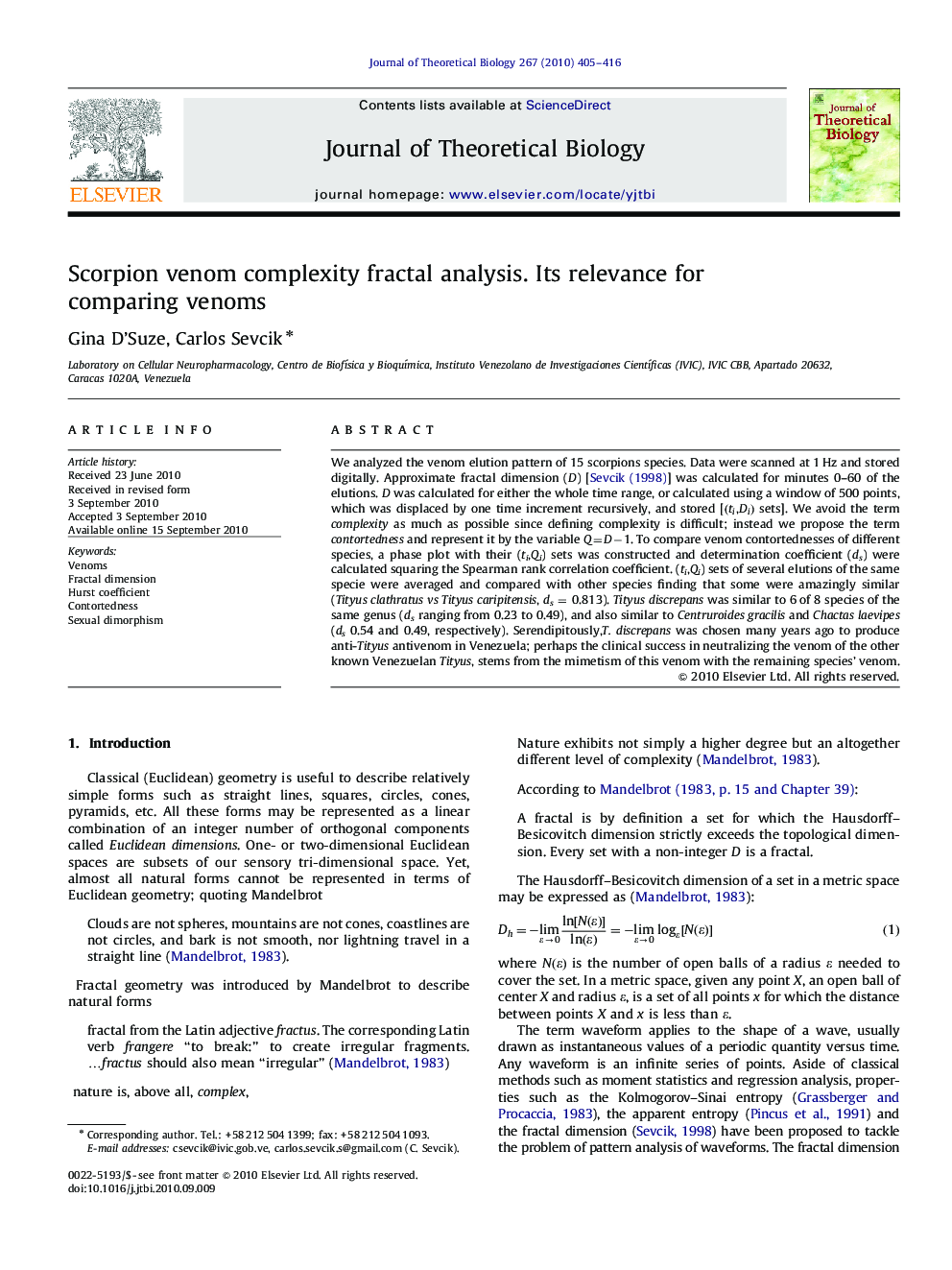| Article ID | Journal | Published Year | Pages | File Type |
|---|---|---|---|---|
| 4497385 | Journal of Theoretical Biology | 2010 | 12 Pages |
We analyzed the venom elution pattern of 15 scorpions species. Data were scanned at 1 Hz and stored digitally. Approximate fractal dimension (D) [ Sevcik (1998)] was calculated for minutes 0–60 of the elutions. D was calculated for either the whole time range, or calculated using a window of 500 points, which was displaced by one time increment recursively, and stored [(ti,Di)(ti,Di) sets]. We avoid the term complexity as much as possible since defining complexity is difficult; instead we propose the term contortedness and represent it by the variable Q=D−1. To compare venom contortednesses of different species, a phase plot with their (ti,Qi) sets was constructed and determination coefficient (ds) were calculated squaring the Spearman rank correlation coefficient. (ti,Qi) sets of several elutions of the same specie were averaged and compared with other species finding that some were amazingly similar (Tityus clathratus vs Tityus caripitensis, ds = 0.813). Tityus discrepans was similar to 6 of 8 species of the same genus (ds ranging from 0.23 to 0.49), and also similar to Centruroides gracilis and Chactas laevipes (ds 0.54 and 0.49, respectively). Serendipitously,T. discrepans was chosen many years ago to produce anti-Tityus antivenom in Venezuela; perhaps the clinical success in neutralizing the venom of the other known Venezuelan Tityus, stems from the mimetism of this venom with the remaining species’ venom.
Research highlights►Venoms are complex mixtures of peptides susceptible of reversed phase HPLC analysis. ►HPLC chromatograms are complex venom fingerprints which cannot be properly compared with conventional techniques. ►We show that analysis of HPLC venom chromatograms is possible using fractal analysis. ►The theory of this fractal analysis is developed in the article. ►We show that fractal analysis makes evident several unknown biological features of scorpion venoms such as sexual dimorphism in some species.
